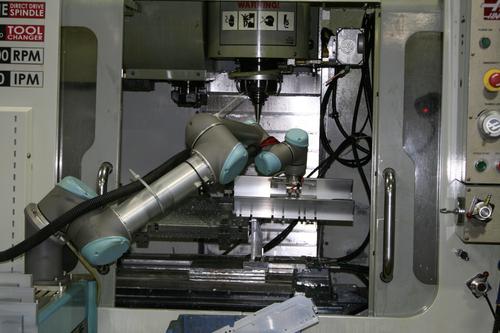April 29, 2015

Is extruded aluminum gaining traction as a mainstream OEM choice for designing, engineering, and producing component parts? Plotting progress along a standard change-management trajectory shows the alloy and the technique marching through the awareness and understanding phases and moving solidly into adoption territory.
In fact, depending on the market sector and application, aluminum extrusion frequently is an institutionalized supply chain approach to optimizing design and engineering, reducing manufacturing costs, and accelerating time to market.

Aluminum is approximately one-third the weight of iron, steel, copper, or brass. Extruding aluminum to concentrate or add strength precisely where needed creates "strength-to-weight" performance that is giving the method a more visible supply chain profile. Across a spectrum of vertical markets and areas that include making components easier to handle and less expensive for shipping, or lightweighting when weight reduction is a priority, aluminum has become a material of choice for many OEMs.
Design versatility, lower-cost tooling, and customization options inherent in aluminum extrusion create advantages that set higher expectations for what is possible. From the perspective of enhanced component performance, extrusion enables cost-efficient execution of complex features and ever-tightening tolerances. Total-cost-to-produce-innovations that optimize manufacturability, streamline assembly, and reduce lead times also make aluminum extrusion a manufacturing method of choice.

Critical advances in alloy formulations, combined with ongoing extrusion process innovations, are the core factors promoting aluminum as a key influence in manufacturing. Replacing carbon with Kevlar to prevent markings and tailoring quench systems to the extrusion thickness for balanced cooling are examples of why aluminum extrusions have become more cost competitive, more cosmetically appealing, and capable of tighter tolerances. But fully evaluating extruded aluminum for new or expanded roles that influence supply chain efficiency, effectiveness, and economics requires a 360-degree view of manufacturing.
Design and Engineering
An optimal product development environment gives OEM product designers and engineers the freedom to innovate on quality, precision, functionality, and performance while optimizing manufacturability to lower total cost and compress lead times. Aluminum extrusion's versatility -- especially when combined with the market- or application-specific expertise of an extruder's design, engineering, and manufacturing specialists -- promotes holistic and forward-thinking new product development outcomes.
Complete development-stage solutions for manufacturing consider a component's essential functions plus the interactions with and its impact on other parts. The total cost of production plus performance against requirements for aesthetics, durability, and weight also drive competitive advantage.
These are some examples of extrusion-powered design and engineering deployed to meet product development challenges more effectively than alternative manufacturing methods.
A single extruded profile can replace rolled shapes riveted together, resulting in higher strength while eliminating joining costs. A designed extrusion can also eliminate welded assemblies, reducing cost while increasing strength and accuracy. Welding aluminum weakens the mechanical properties of the weld joint. It can be costly, and sometimes not possible, to regain welded component strength using artificial aging.
Extruding a component to exact size and shape can reduce or eliminate the cost of secondary machining operations.
Extrusion profiles can be made to precise or standard dimensional tolerances, according to the specifications critical to specific component features. Applying only the critical-to-function tolerances to the print reduces manufacturing time.
The flexibility inherent in extrusion methodologies greatly enhances the ability to apply design-for-manufacturability principles, such as leveraging final-shape or near-net-shape production to reduce cost.
Differing material properties enable product designers and engineers to specify the aluminum alloy best suited to a component's critical design absolutes, functional needs, estimated annual usage, and secondary manufacturing operations. Alloys like 6063 and 6005A, for example, extrude at faster rates than 7000-series alloys. The majority of aluminum extrusions utilize 6063, but new, leading-edge alloys produce stronger, lighter extrusions. Aluminum-lithium is an emerging alloy that is 7% to 10% lighter and up to 50% stiffer than conventional aircraft alloys. Certain 6000-series alloys are easier to bend for use in marine applications, while 2000-series alloys accommodate secondary machining processes better. Alloy specification also can have a significant effect on surface finish.
About the Author(s)
You May Also Like





